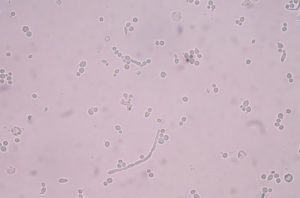
This wine makes me as happy as this essay. It also neatly proves that micro-oxygenation will not make barrels obsolete.
I kinda like this essay. It was a beautiful moment where all my facts and figures were easily recalled and the essay question itself provoked further questions from me (which I am now pursuing with different wineries to find out their experience). I think the structure is pretty clear too.
This is the kind of moment (and feeling) I always wish for…
***********************************************
It has been said that “micro-oxygenation might render expensive barrels obsolete”. What do you think is the future of micro-oxygenation, and what impact (if any) will this have on the wine industry?
With the advent of successful micro-oxygenation over the past few decades, this practice has increased in use and importance in the wine industry, and some have even suggested that micro-oxygenation might render expensive barrels obsolete. Micro-oxygenation is a process that mimics the minute oxygen exchange that usually happens over months in barrel. A micro-oxygenation meter can be used in tank to diffuse out tiny amounts (0.1mg/liter/month) of oxygen that can help polymerize tannins and stabilize color, and if oak flavor was also necessary, this could be added in the form of oak alternatives. There are advantages and disadvantages of using micro-oxygenation and depending on the size of the winery and skill of the winemaker, this technique could be used to replace barrels in some wineries.
One of the first advantages of micro-oxygenation is the relative cost to barrels. The initial capital outlay for a micro-oxygenation diffuser is high, with ongoing costs related to O2 tanks, but these expenses can be amortized over larger amounts of wine (depending on your tank size). There is also a significant savings of labor: moving and monitoring dozens of barrels relative to programing the micro-oxygenation diffuser in a single tank. Relative to that tank of wine divided into dozens of French oak barrels (costing around €1,200 for each new one), micro-oxygenation can be an economic option for some wineries, particularly larger wineries.
There is also an advantage of speed. Whereas the traditional oak barrels will naturally have individual rates of oxygen exchange (also depending on how many times that barrel has been used), a micro-oxygenation diffuser can be dialed in precisely to the level of O2 needed for a particular wine. With all of the wine in one tank, it is relatively easy to measure a wine, determine the rate of micro-oxygenation and set the diffuser to dispense that amount. Follow up monitoring and measurement in tank is relatively easy as well, compared to measuring dozens of barrels for the same metrics.
Despite these advantages, there still needs to be considerable practice and skill applied to use a micro-oxygenation meter. The science of tannin management is not fully understood and deliberate exposing a wine to oxygen always carries a risk of oxidation. This risk is further magnified by the volume of oxidizing an entire tank of wine relative to a single barrel. Calculating the rate of oxygen metering is not a straight formula, so a winemaker would need to understand the risks and gain considerable practice before completely forgoing barrels.
Some in the industry also question whether micro-oxygenation will result in a homogenization of styles of wine. For that same disadvantage that every traditional oak barrel will result in a slightly different wine (both from micro-oxygenation and from choice of origin/toast of the barrel), those differences can be blended to create a more complex wine than if everything was dosed from one tank. Even if a tank undergoing micro-oxygenation used a variety of flavor profiles of oak alternatives, the winemaker there will not have as much control to blend the final product to something more complex. A consistent wine style might be the aim of a larger volume of branded wines, but smaller operations might want to keep the variation (and subsequent potential complexity) of using smaller barrels.
Micro-oxygenation has several advantages including economics and speed, which might render this practice ideal for larger, branded wines. Just the same, using this technique requires considerable risk, which might be easier for the larger winey to absorb, and skill, which the larger winey might be able to attract. For these reasons, there seems to be no issue to use micro-oxygenation for larger, branded wines where consistency is key to the style. On the other hand, smaller wineries might still incur the higher expenses and longer maturation of using barrels for the same effect, if only because their consumers will accept more complexity and variation in wines.
The future impact of micro-oxygenation will be the continued quality improvement for branded wines at a relatively low cost, creating consistent wines with smooth tannins and appropriate color, and raising the bar at the value end of wine industry.


